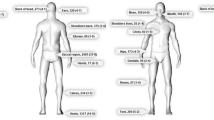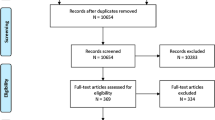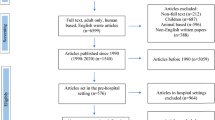Abstract
Introduction
Isolated hip fractures (IHF) are common injuries in the elderly. Controversy exists about which hospital service is best suited to manage these patients. We hypothesize that baseline patient severity of illness (SOI) score drives patient outcomes, not the hospital service managing these patients.
Methods
Retrospective review of all IHF patients from 2014 to 2018 at our Level 1 trauma center. Basic demographics were obtained. Patients were divided into service line they were admitted; surgical vs non-surgical. Primary outcomes included hospital length of stay (HLOS), time to OR, time to VTE prophylaxis, complication rate (defined by the Trauma Quality Improvement Program), 30-day mortality, and readmissions. SOI score (which is DRG-based) was controlled to see if any differences in primary outcomes occurred between cohorts. Chi-square was used for categorical variables and regression analysis for continuous variables. Significance was p < 0.05.
Results
A total of 366 total patients were analyzed with the same ISS. A total of 102 were admitted to a surgical service and 264 to a non-surgical service. Average overall age was 80 year, 66.9% were female, and 86% were Caucasian. There was no statistical difference between outcomes when comparing admitting services. Controlling for SOI score, there was no difference between admitting service for outcomes as well. SOI score was a significant predictor for increased HLOS and complication occurrence (p < 0.001) via regression analysis, with a 6.06-fold increase in complication rate from mild to moderate SOI score (p = 0.001).
Conclusion
There is no difference in outcomes based on admitting service and process measures. However, the SOI score is perhaps a better predictor of outcomes for isolated hip fracture patients.
Similar content being viewed by others
References
Zuckerman JD (1996) Hip fracture. N Engl J Med 334:1519–1525
Schnell S, Friedman SM, Mendelson DA et al (2010) The 1-year mortality of patients treated in a hip fracture program for elders. Geriatr Orthop Surg Rehabil 1(1):6–14
Liang L, Moore B, Soni A (2020) National inpatient hospital costs: the most expensive conditions by payer, 2017. Healthcare Cost and Utilization Projec from https://www.hcup-us.ahrq.gov/reports/statbriefs/sb261-Most-Expensive-Hospital-Conditions-2017.jsp
Dolan P, Torgerson DJ (1998) The cost of treating osteoporotic fractures in the United Kingdom female population. Osteoporos Int 8:611–617
Miyamoto RG, Kaplan KM, Levine BR et al (2008) Surgical management of hip fractures: An evidence-based review of the literature. I: femoral neck fractures. J Am Acad of Orthop Surg 16(10):596–607
Patel JN, Klein DS, Sreekumar SS et al (2020) Outcomes in multidisciplinary team-based approach in geriatric hip fracture care: a systemic review. J Am Acad Orthop Surg 28:128–133
Siu CW, Sun NCH, Lau TW et al (2010) Preoperative cardiac risk assessment in geriatric patients with hip fractures: an orthopedic surgeons’ perspective. Osteoporos Int 21(Suppl 4):S587–S591
Cooper C (1997) The crippling consequences of fractures and their impact on quality of life. Am J Med 103:12S-17S
Barone A, Giusti A, Pizzonia M et al (2006) A comprehensive geriatric intervention reduces short- and long-term mortality in older people with hip fracture. J Am Geriatr Soc 54(7):1145–1147
Roberts KC, Brox WT, Jevsevar DS et al (2015) Management of hip fractures in the elderly. J Am Acad Orthop Surg 23:131–137
https://www.facs.org/quality-programs/trauma/quality/trauma-quality-improvement-program/ (accessed June 10th, 2022)
Horn SD, Horn RA, Sharkey PD (1984) The severity of illness index as a severity adjustment to diagnosis-related groups. Health Care Financ Rev Suppl pp 33–45
Gabbe BJ, Magtengaard K, Hannaford AP et al (2005) Is the Charlson Comorbidity Index useful for predicting trauma outcomes? Acad Emerg Med 12(4):318–321
Johnell O, Kanis JA (2006) An estimate of the worldwide prevalence and disability associated with osteoporotic fractures. Osteoporos Int 17:1726–1733
Magaziner J, Hawkes W, Herbel JR et al (2000) Recovery from hip fractures in eight areas of function. J Gerontol A Biol Sci Med Sci 55:M498–M507
American College of Surgeons Verification Review Consultation (accessed February 26th, 2022) VRC Standards Frequently Asked Questions from https://www.facs.org/quality-programs/trauma/tqp/center-programs/vrc/faq/standards
Moran CG, Wenn RT, Sikand M et al (2005) Early mortality after hip fracture: Is delay before surgery important? J Bone Joint Surg Am 87:483–489
Lofgren S, Rehnberg C, Ljunggren, et al (2015) Coordination pays off: A comparison of two models for organizing hip fracture care, outcomes and costs. Int J Health Plann Manage 30:426–438
Soong C, Cram P, Chezar K et al (2016) Impact of integrated hip fracture inpatient program on length of stay and costs. J Orthop Trauma 30:647–652
Della Rocca GJ, Moylan KC, Crist BD et al (2013) Comanagement of geriatric patients with hip fractures: a retrospective, controlled, cohort study. Geriatr Orthop Surg Rehabil 4:10–15
Swart E, Vasudeva E, Makhni EC et al (2016) Dedicated perioperative hip fracture comanagement programs are cost-effective in high-volume centers: An economic analysis. Clin Orthop Relat Res 474:222–233
Nyholm AM, Gromov K, Palm H et al (2015) Time to surgery is associated with thirty-day and ninety-day mortality after proximal femoral fracture: A retrospective observational study on prospectively collected data from the Danish fracture database collaborators. J Bone Joint Surg Am 97:1333–1339
Daugaard CL, Jorgensen HL, Riis T et al (2012) Is mortality after hip fracture associated with surgical delay or admission during weekends and public holidays? A retrospective study of 38,020 patients. Acta Orthop 83:609–613
Tan LT, Wong SJ, Kwek EB (2017) Inpatient cost for hip fracture patients managed with an orthogeriatric care model in Singapore. Sinapore Med J 58:139–144
Author information
Authors and Affiliations
Corresponding author
Ethics declarations
Conflict of interest
Dr. Zachary Bauman is a paid educational consultant for KLS-Martin, Zimmer-Biomet, and Atricure. No other authors have any conflicts of interest to disclose.
Additional information
Publisher's Note
Springer Nature remains neutral with regard to jurisdictional claims in published maps and institutional affiliations.
Rights and permissions
About this article
Cite this article
Bauman, Z.M., Phillips, P., Cantrell, E. et al. Severity of Illness Impacts Outcomes More than Admitting Service for Isolated Hip Fracture Patients. World J Surg 46, 2344–2349 (2022). https://doi.org/10.1007/s00268-022-06659-x
Accepted:
Published:
Issue Date:
DOI: https://doi.org/10.1007/s00268-022-06659-x




